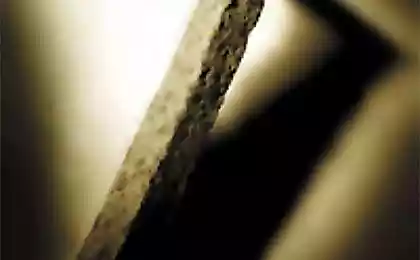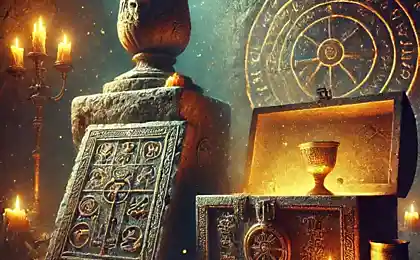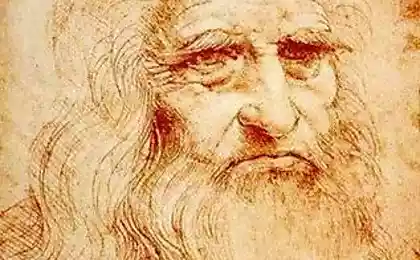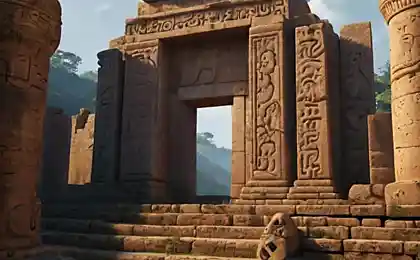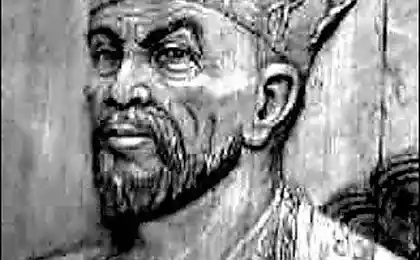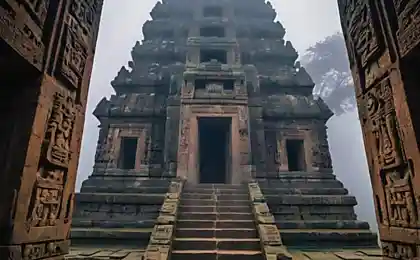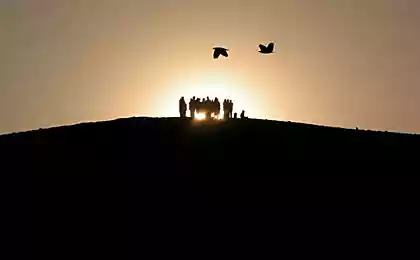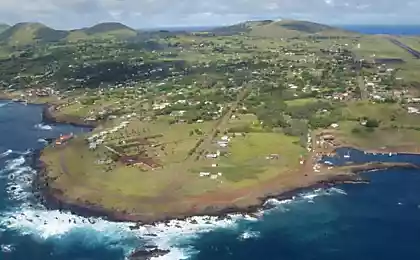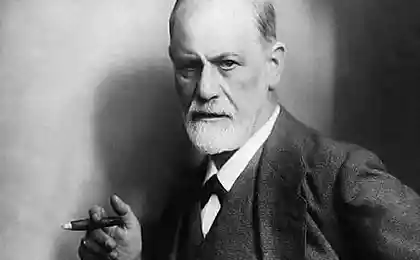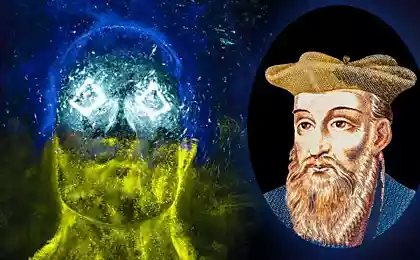1499
Findings of which is not to say or forbidden archeology
Before Sotomayor finds Sanskrit never been associated with the American continent, rather, it refers to cultures of Europe, Asia and North Africa. For example, it is believed that the ancient Egyptian writing system is constructed based on it. Now scientists are conducting a variety of research parallels are trying to "link" the centers of culture and find out the origin of a mysterious treasure.
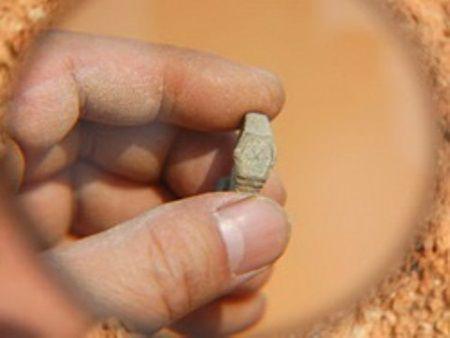
Distance from La Mana Giza is 0 to 3 on the circumference of the earth. The very words of La Mana is not typical for places where the array is located, any meaning in the local languages and dialects can not be held. But in Sanskrit "mana" means the mind, in the sense of reason. Scientists suggest that the name of the area got now living in her peoples from their predecessors, perhaps came to America from Asia.
World Mysteries quite obychayny for Central America. Despite the similarity of US and Egyptian pyramids, they have a number of significant technical differences. Sotomayor expedition discovered the stone pyramid is more reminiscent of his form of the great pyramids of Giza.
But this does not end its mysteries. On the Pyramid cut masonry ranks number thirteen. In the upper part of the image is applied Open your eyes, or in the mystical tradition, the "all-seeing eye." Thus, the pyramid, found in La Mana is an accurate picture of the Masonic sign, known most of humanity through the banknote in one dollar.
Another striking finding expedition Sotomayor is executed with great skill stone image of the king cobra. And it's not a high level of art of the ancient craftsmen. Everything is much more mysterious, because the king cobra is not found in America. Her area of habitat - tropical rainforests of India. However, its image quality leaves no doubt that the artist personally seen this snake. Thus, an object coated with a picture of a snake, or its author had to move from Asia to America through the ocean in ancient times, when these are believed to be no means did not exist. Riddles are multiplying.
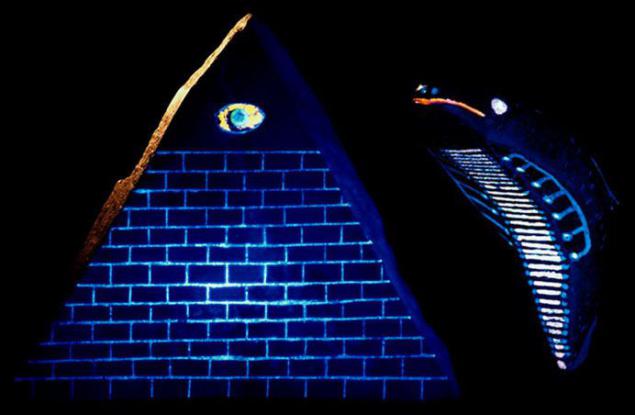
The answer may be able to find a terrific supporting third Sotomayor. In the tunnel of La Mans and found one of the oldest in the world globes, also of stone. In less than ideal ball for the manufacture of which, perhaps, the master simply regretted effort, but rounded boulder marked acquaintances from school image continents.
But even the non-specialist immediately striking differences. If the outline of Italy, Greece, the Persian Gulf, the Dead Sea and India do not differ much from the modern, from the coasts of Southeast Asia at America planet looks quite different. The huge mass of earth depicted in what is now lapping only the boundless sea.
Caribbean and the Florida peninsula absent. Just below the equator in the Pacific Ocean is a gigantic island, roughly equal in size to the modern Madagascar. Modern Japan is one giant continent, stretching to the shores of America, and extends far to the south.
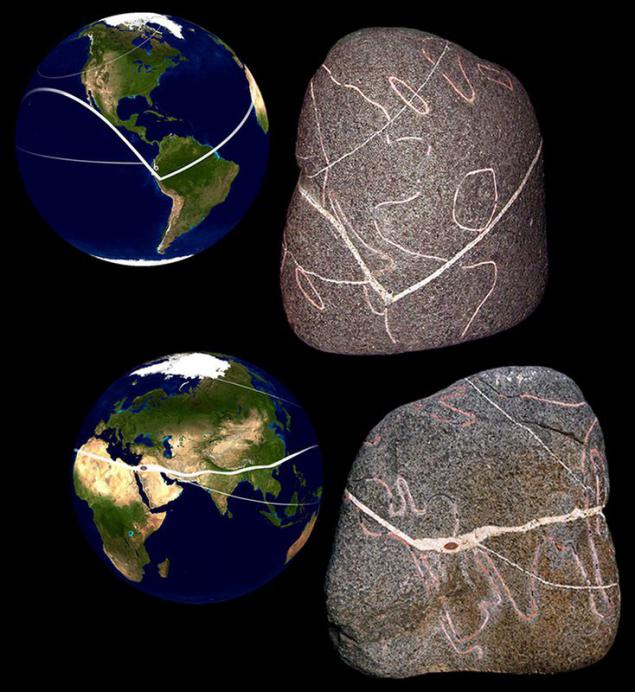
Perhaps this is the legendary continent of Mu, whose existence in ancient times assumed a Japanese scientist M. Kimura. Later, he claimed, this continent sank to the ocean floor, like Plato described Atlantis. However, some scientists suggest that it is Mu and described by Plato called Atlantis. The presence of this continent makes the journey from Asia to America in ancient times from the event impossible in quite feasible and possibly routine. Genetic links American Indians and Asians have long proven, and the presence of the ancient continent, linking these parts of the world, it is able to explain their origin. It remains to add that the discovery at La Mans, apparently, is the most ancient map of the world, and presumably her age is not less than 12 000 years.
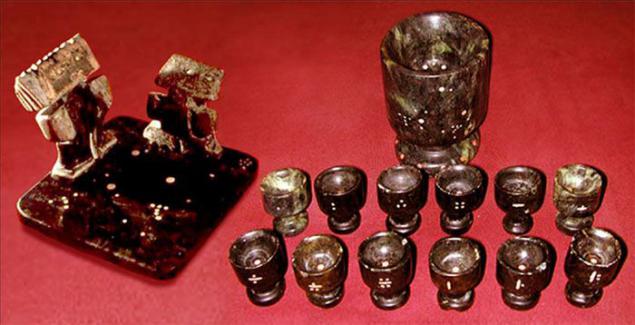
No less interesting and other finds Sotomayor. In particular, it found "service" of the thirteen bowls. Twelve of these are perfectly equal volume and thirteenth - much larger. If you fill 12 small bowls to the brim with liquid, and then merge them into a large, then it is filled exactly to the brim. All bowls are made of jade. The purity of their treatment suggests the presence of ancient stone processing technology similar to modern lathe.
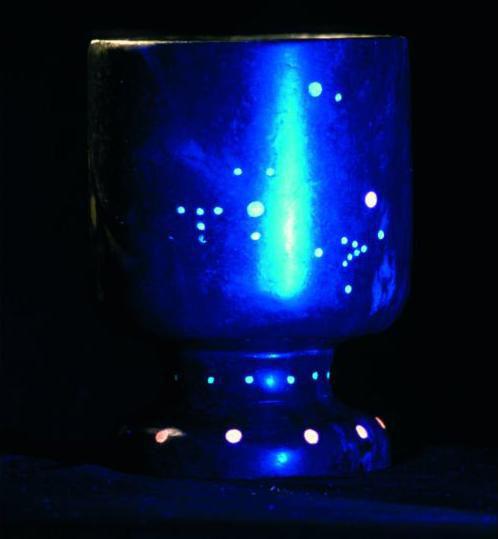
Almost all the findings Sotomayor glow in the ultraviolet. And then some of them appear colorful images of stars - or rather the constellation of Orion, the star Aldebaran and the twin stars Castor and Pollux. Why this area of the sky attracted the attention of the ancient masters, we can only assume.
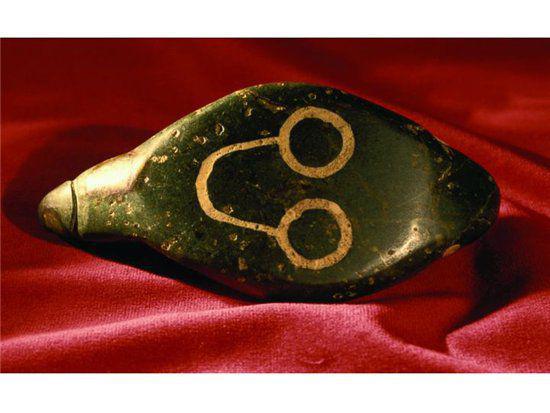
On a number of findings are shown converging circles, clearly associated with the concepts of Sanskrit mandala. Interestingly, this view virtually unchanged entered the Indian understanding of the structure of the world. & quot; All that makes the Indian, located in a circle, because this power of the world. Everything happens in circles, and everything tries to be round ... All that makes the power of the world, made in a circle & quot; - He said in 1863, the famous Indian chief Black Elk.
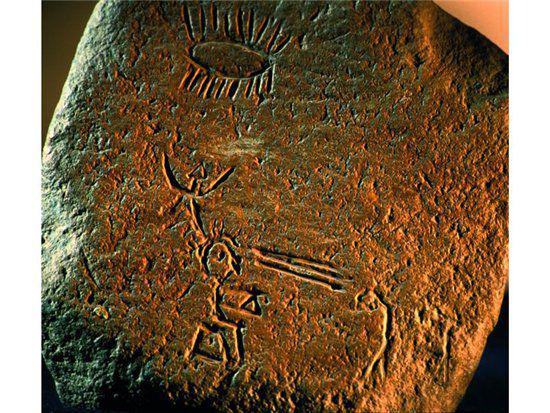
While the findings made by Sotomayor, raise more questions than they answer. But they once again confirm the thesis that our knowledge of the history of the Earth and humanity is still very far from perfect.
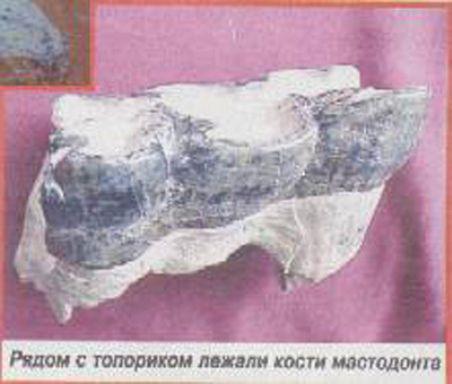
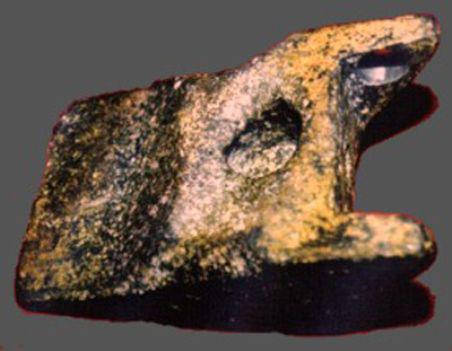
The incredible discovery of Ayuda
On the banks of the river Mures, which flows through the territory of Romania, the spring of 1974 were construction works. During which, in one of the sand pits, workers stumbled upon a few odd-shaped objects. They lie deep in the fine river sand, a large quarry at a depth of about 10 meters. Subjects were covered with a thick layer of sand cover, but shaped like fossils of ancient animals, and were sent to a small town aiud.
The Museum of Local History group of historians has identified two of the three fragments of bones finds that a more detailed analysis turned out to be a young mastodon tusk and his tibia. The third subject engaged in a major Archeological Institute of Cluj.
When the researchers removed the crust, they were very surprised - turned out to be the subject of metal products, vaguely reminiscent of a stone ax, how ancient people used. The subject was subjected to a more detailed study. It had a length of about 20 centimeters, of elongated shape, inside it takes two different-sized openings which converge at the center of a right angle. The lower part of the hole was slightly deformed. Obviously, it is inserted a rod. The other two surfaces were found numerous traces left after the dynamic object contact with any hard objects. The very same object looked like a piece of some machines.
For a more detailed study of the object of his samples were aimed in Metallurgical Institute, the doctor Niderkoronu. Scientist, after careful examination of the material finds, said that almost 90% of it is made of aluminum. In addition, the complicated structure of the alloy containing copper, silicon, zinc, lead and tin.
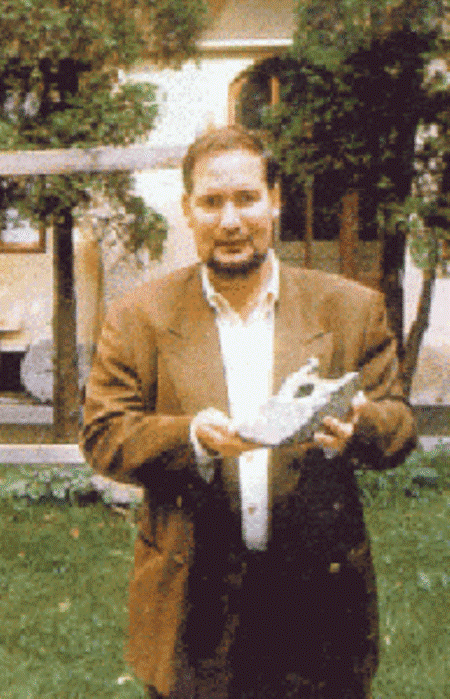
Professors surprised by the fact that, although aluminum is the most abundant metal in the earth, in nature in its pure form it is not found. The first bars of aluminum came into mass production only in 1883, and they were made at the foundries of the American steel company Alcoa (as a high-tech process requires the aluminum melt temperatures of about 1000 pre-degree Celsius).
And the object that was found in Romania was much older than a hundred years. It was established through the thickness of the film of aluminum oxide on the surface. The fact that the air immediately oxidized aluminum, covered with a thin, durable film that improves the corrosion resistance of metal. As the film thickness is often possible to judge the age of a product.
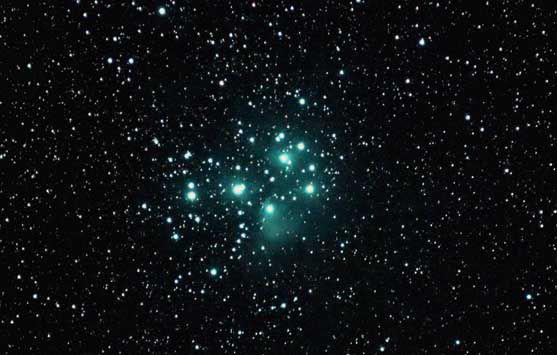
The film thickness of the facility was millimeter, which corresponds to at least hundreds of thousands of years (analogous to the samples in the nature practically does not exist). Professor Niderkron in the accompanying note wrote: "Incredibly, it seems to us that the aluminum structure of aged. As if other alloying elements have regained their own lattices ... »
Since the proximity of an object to the bones of a mammoth that died more than a million years ago, allow us to make a bold and sensational speculation - the object can be of the age equal to the age of mankind. And maybe more.
--img12--
For a long time the research team, which included paleontologists, archaeologists, engineers and metallurgists, they could not tell the exact purpose of the object. It was the analysis of all the modern facilities, where you can find the item of such a design.
One of the engineers suggested that the find is very much like a support or chassis of a medium-sized aircraft with vertical take-off, which was adapted for the landing on the planet's surface. Two holes can be places of mounting racks and scratches on the bottom surface may have arisen as a result of regular rubbing of the ground.
Since aluminum - lightweight and durable metal, it is used in the aircraft industry, even now. Maybe over the territory of Romania, in the ancient flying space probe, which crashed, and the wreckage was carried out over the river. This chassis, hitting in shallow water, covered with sand and lay there until our time.
--img13--
Romanian scientists Florian Gheorghita, a member of the commission that studied the find, published in 1992 a detailed article in the journal Ancient skies. This article came out just before the moment when the discovery was not gone right out of the museum, in which there was a moment of discovery. Gheorghita suggested that this item has an extraterrestrial origin and is part of the spaceship aliens.
This version supported ufologist M. Hezemann, who in 1994 was able to find traces of the "discovery of the Ayuda". The story is more like detective. Arriving at the meeting of ufologists in the Hungarian Debrecen, he was invited by some people in the city of Cluj. The invitation was listed offer "get acquainted with the objects found near Ayuda summer of 1974". Indeed, Professor Hezemann met in Romania to the man who showed him the subject of aluminum.
Professor confirms that the object is not lost, it is in good hands and maybe when there will be more high-tech research methods, it will once again be evaluated for the possibility of its extraterrestrial origin.
--img14--

Distance from La Mana Giza is 0 to 3 on the circumference of the earth. The very words of La Mana is not typical for places where the array is located, any meaning in the local languages and dialects can not be held. But in Sanskrit "mana" means the mind, in the sense of reason. Scientists suggest that the name of the area got now living in her peoples from their predecessors, perhaps came to America from Asia.
World Mysteries quite obychayny for Central America. Despite the similarity of US and Egyptian pyramids, they have a number of significant technical differences. Sotomayor expedition discovered the stone pyramid is more reminiscent of his form of the great pyramids of Giza.
But this does not end its mysteries. On the Pyramid cut masonry ranks number thirteen. In the upper part of the image is applied Open your eyes, or in the mystical tradition, the "all-seeing eye." Thus, the pyramid, found in La Mana is an accurate picture of the Masonic sign, known most of humanity through the banknote in one dollar.
Another striking finding expedition Sotomayor is executed with great skill stone image of the king cobra. And it's not a high level of art of the ancient craftsmen. Everything is much more mysterious, because the king cobra is not found in America. Her area of habitat - tropical rainforests of India. However, its image quality leaves no doubt that the artist personally seen this snake. Thus, an object coated with a picture of a snake, or its author had to move from Asia to America through the ocean in ancient times, when these are believed to be no means did not exist. Riddles are multiplying.

The answer may be able to find a terrific supporting third Sotomayor. In the tunnel of La Mans and found one of the oldest in the world globes, also of stone. In less than ideal ball for the manufacture of which, perhaps, the master simply regretted effort, but rounded boulder marked acquaintances from school image continents.
But even the non-specialist immediately striking differences. If the outline of Italy, Greece, the Persian Gulf, the Dead Sea and India do not differ much from the modern, from the coasts of Southeast Asia at America planet looks quite different. The huge mass of earth depicted in what is now lapping only the boundless sea.
Caribbean and the Florida peninsula absent. Just below the equator in the Pacific Ocean is a gigantic island, roughly equal in size to the modern Madagascar. Modern Japan is one giant continent, stretching to the shores of America, and extends far to the south.

Perhaps this is the legendary continent of Mu, whose existence in ancient times assumed a Japanese scientist M. Kimura. Later, he claimed, this continent sank to the ocean floor, like Plato described Atlantis. However, some scientists suggest that it is Mu and described by Plato called Atlantis. The presence of this continent makes the journey from Asia to America in ancient times from the event impossible in quite feasible and possibly routine. Genetic links American Indians and Asians have long proven, and the presence of the ancient continent, linking these parts of the world, it is able to explain their origin. It remains to add that the discovery at La Mans, apparently, is the most ancient map of the world, and presumably her age is not less than 12 000 years.

No less interesting and other finds Sotomayor. In particular, it found "service" of the thirteen bowls. Twelve of these are perfectly equal volume and thirteenth - much larger. If you fill 12 small bowls to the brim with liquid, and then merge them into a large, then it is filled exactly to the brim. All bowls are made of jade. The purity of their treatment suggests the presence of ancient stone processing technology similar to modern lathe.

Almost all the findings Sotomayor glow in the ultraviolet. And then some of them appear colorful images of stars - or rather the constellation of Orion, the star Aldebaran and the twin stars Castor and Pollux. Why this area of the sky attracted the attention of the ancient masters, we can only assume.

On a number of findings are shown converging circles, clearly associated with the concepts of Sanskrit mandala. Interestingly, this view virtually unchanged entered the Indian understanding of the structure of the world. & quot; All that makes the Indian, located in a circle, because this power of the world. Everything happens in circles, and everything tries to be round ... All that makes the power of the world, made in a circle & quot; - He said in 1863, the famous Indian chief Black Elk.

While the findings made by Sotomayor, raise more questions than they answer. But they once again confirm the thesis that our knowledge of the history of the Earth and humanity is still very far from perfect.


The incredible discovery of Ayuda
On the banks of the river Mures, which flows through the territory of Romania, the spring of 1974 were construction works. During which, in one of the sand pits, workers stumbled upon a few odd-shaped objects. They lie deep in the fine river sand, a large quarry at a depth of about 10 meters. Subjects were covered with a thick layer of sand cover, but shaped like fossils of ancient animals, and were sent to a small town aiud.
The Museum of Local History group of historians has identified two of the three fragments of bones finds that a more detailed analysis turned out to be a young mastodon tusk and his tibia. The third subject engaged in a major Archeological Institute of Cluj.
When the researchers removed the crust, they were very surprised - turned out to be the subject of metal products, vaguely reminiscent of a stone ax, how ancient people used. The subject was subjected to a more detailed study. It had a length of about 20 centimeters, of elongated shape, inside it takes two different-sized openings which converge at the center of a right angle. The lower part of the hole was slightly deformed. Obviously, it is inserted a rod. The other two surfaces were found numerous traces left after the dynamic object contact with any hard objects. The very same object looked like a piece of some machines.
For a more detailed study of the object of his samples were aimed in Metallurgical Institute, the doctor Niderkoronu. Scientist, after careful examination of the material finds, said that almost 90% of it is made of aluminum. In addition, the complicated structure of the alloy containing copper, silicon, zinc, lead and tin.

Professors surprised by the fact that, although aluminum is the most abundant metal in the earth, in nature in its pure form it is not found. The first bars of aluminum came into mass production only in 1883, and they were made at the foundries of the American steel company Alcoa (as a high-tech process requires the aluminum melt temperatures of about 1000 pre-degree Celsius).
And the object that was found in Romania was much older than a hundred years. It was established through the thickness of the film of aluminum oxide on the surface. The fact that the air immediately oxidized aluminum, covered with a thin, durable film that improves the corrosion resistance of metal. As the film thickness is often possible to judge the age of a product.

The film thickness of the facility was millimeter, which corresponds to at least hundreds of thousands of years (analogous to the samples in the nature practically does not exist). Professor Niderkron in the accompanying note wrote: "Incredibly, it seems to us that the aluminum structure of aged. As if other alloying elements have regained their own lattices ... »
Since the proximity of an object to the bones of a mammoth that died more than a million years ago, allow us to make a bold and sensational speculation - the object can be of the age equal to the age of mankind. And maybe more.
--img12--
For a long time the research team, which included paleontologists, archaeologists, engineers and metallurgists, they could not tell the exact purpose of the object. It was the analysis of all the modern facilities, where you can find the item of such a design.
One of the engineers suggested that the find is very much like a support or chassis of a medium-sized aircraft with vertical take-off, which was adapted for the landing on the planet's surface. Two holes can be places of mounting racks and scratches on the bottom surface may have arisen as a result of regular rubbing of the ground.
Since aluminum - lightweight and durable metal, it is used in the aircraft industry, even now. Maybe over the territory of Romania, in the ancient flying space probe, which crashed, and the wreckage was carried out over the river. This chassis, hitting in shallow water, covered with sand and lay there until our time.
--img13--
Romanian scientists Florian Gheorghita, a member of the commission that studied the find, published in 1992 a detailed article in the journal Ancient skies. This article came out just before the moment when the discovery was not gone right out of the museum, in which there was a moment of discovery. Gheorghita suggested that this item has an extraterrestrial origin and is part of the spaceship aliens.
This version supported ufologist M. Hezemann, who in 1994 was able to find traces of the "discovery of the Ayuda". The story is more like detective. Arriving at the meeting of ufologists in the Hungarian Debrecen, he was invited by some people in the city of Cluj. The invitation was listed offer "get acquainted with the objects found near Ayuda summer of 1974". Indeed, Professor Hezemann met in Romania to the man who showed him the subject of aluminum.
Professor confirms that the object is not lost, it is in good hands and maybe when there will be more high-tech research methods, it will once again be evaluated for the possibility of its extraterrestrial origin.
--img14--


